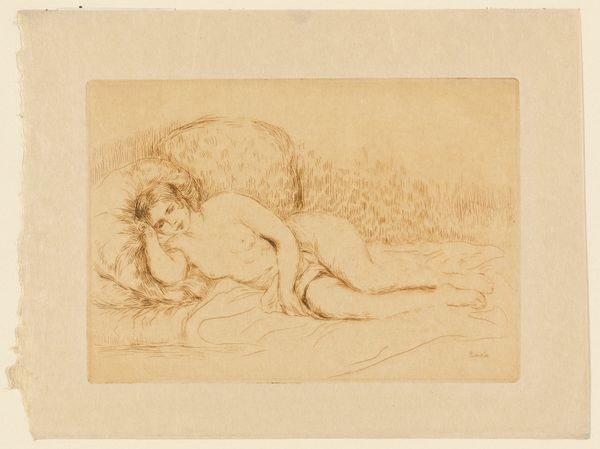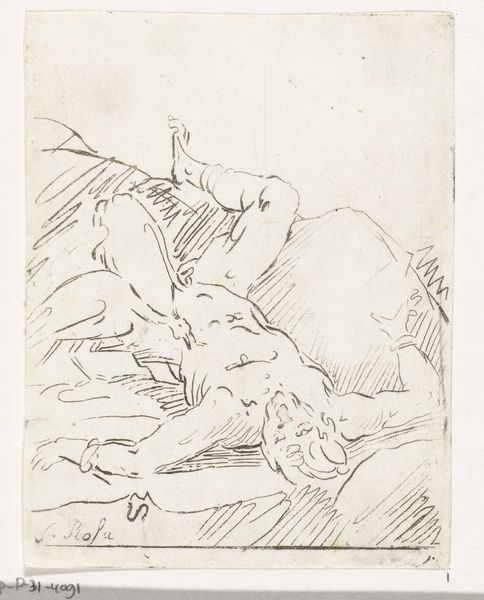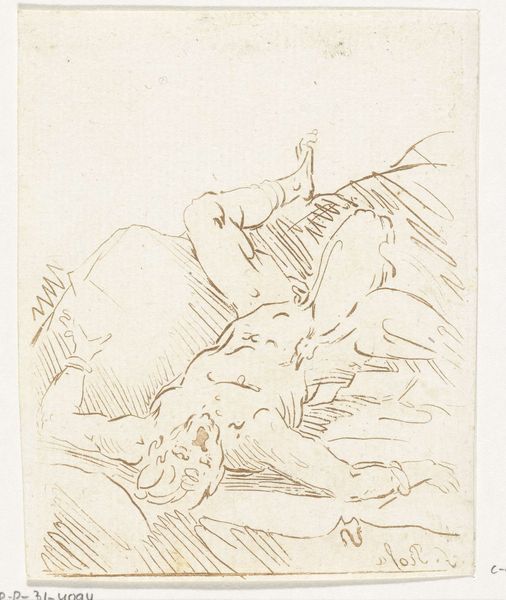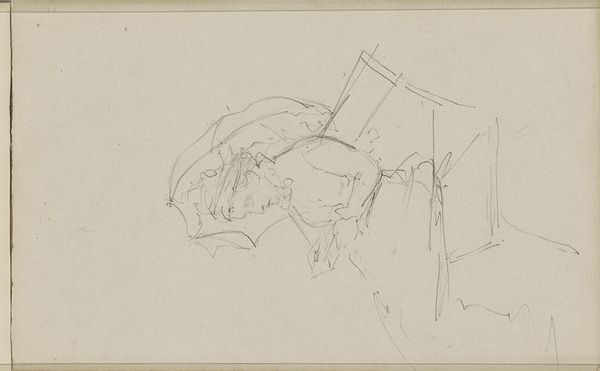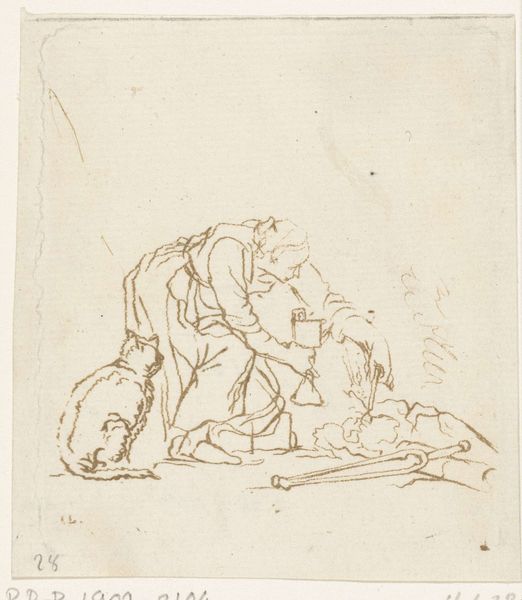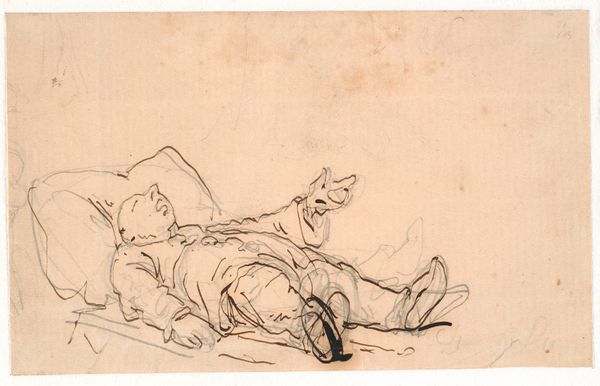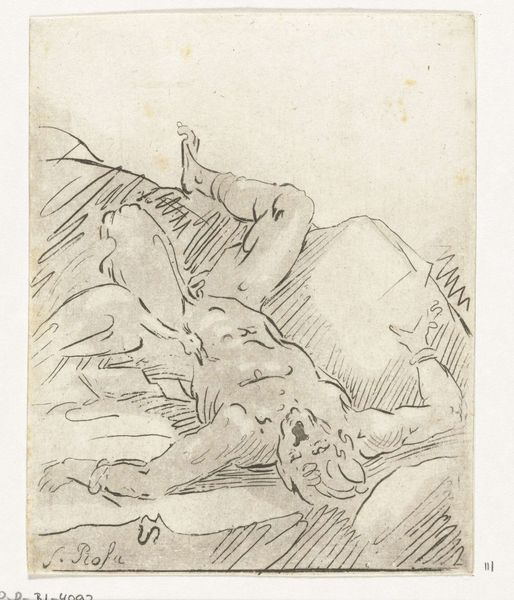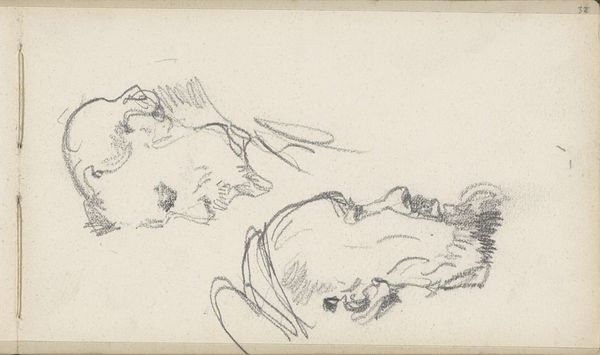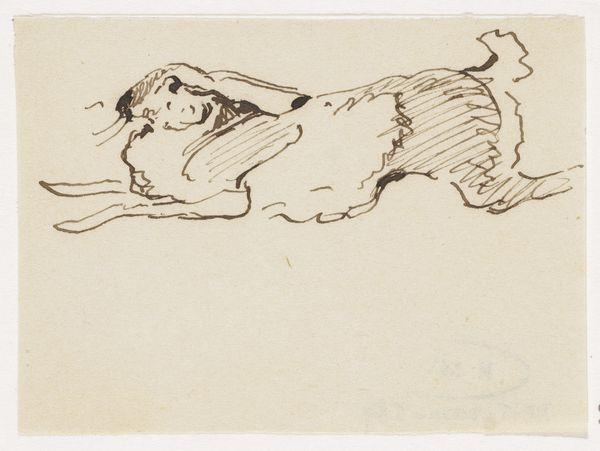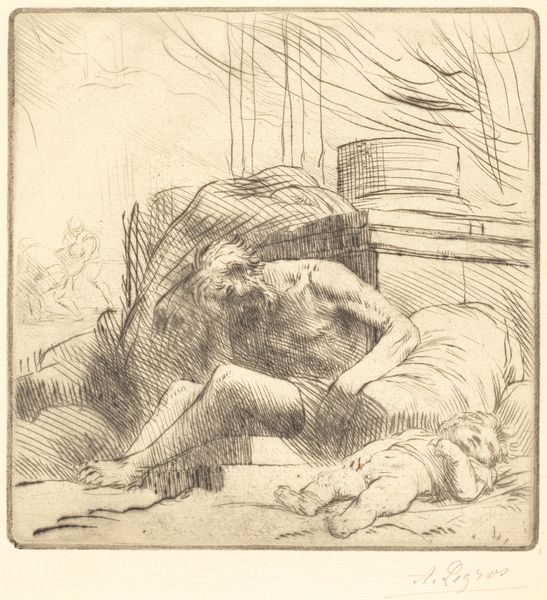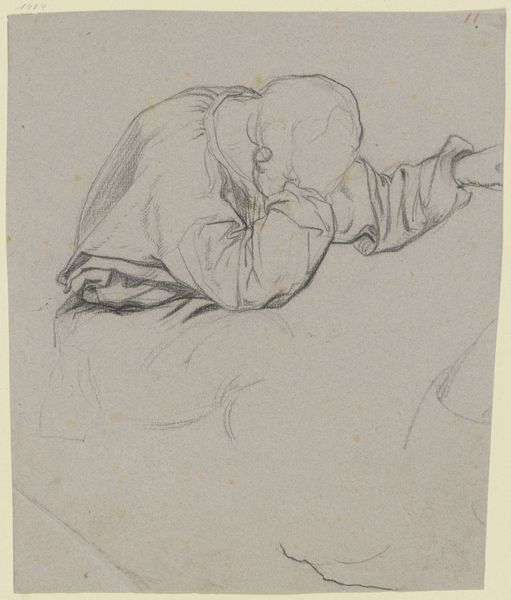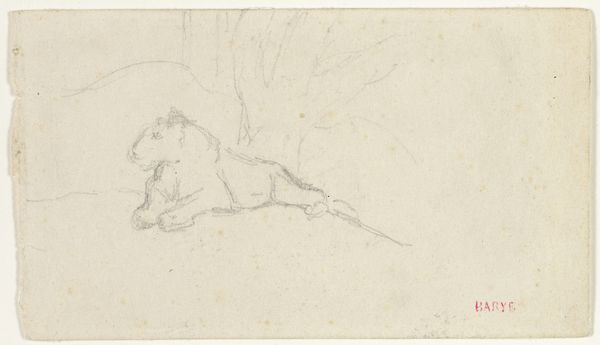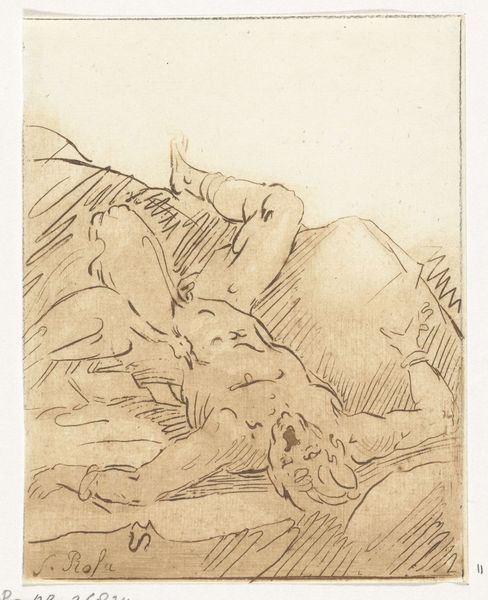
drawing, paper, ink, pencil
#
portrait
#
drawing
#
baroque
#
paper
#
ink
#
pencil
#
genre-painting
#
realism
Dimensions: height 134 mm, width 183 mm
Copyright: Rijks Museum: Open Domain
Curator: Welcome. Before us hangs "Saskia Ill in Bed," a tender drawing rendered in ink and pencil on paper, attributed to Rembrandt van Rijn and dated circa 1693-1700. It's currently held at the Rijksmuseum. Editor: There's a haunting fragility here, isn’t there? The sheer economy of line; it's like a whisper. The composition centers around horizontals which underscores the languid mood, but also perhaps… finality? Curator: Rembrandt was profoundly impacted by his relationship with Saskia. In many ways, it redefined not only the arc of his artistic process, but also its symbolic depth. We should recall Saskia van Uylenburgh was Rembrandt’s first wife, muse, and the mother of his only surviving child, Titus. Editor: Notice how the minimal lines describe the pillows plumply supporting her head and torso. He gives a palpable weight to the scene. But, look at the angles! Even on her sickbed, she's positioned to visually engage. I appreciate that structural resilience. Curator: The intimate nature certainly captures Saskia during an illness. Perhaps we see his need to memorialize her. Given her subsequent death in 1642, a year after Titus was born, the drawing could function as a poignant memento mori, laden with complex emotional signifiers. Her image appears frequently during her sickness and throughout their marriage, both idealized and depicted with candidness. Editor: Indeed. Yet I see Rembrandt manipulating space through varying densities of hatching. Where shadows deepen around her face, the paper is worked more, giving this drawing both dimension and depth that counters that flatness often found in sketches. A play on form! Curator: The loose lines evoke the ephemerality of life. It speaks volumes of vulnerability and loss, which resonated in the Dutch Republic. There's almost a tradition within that region for conveying these narratives. Editor: Agreed. On a formal level, Rembrandt transforms grief into compositional power and that transforms how we see both art and ourselves in relation. Curator: And the psychological charge of images and cultural memory—an enduring visual record, in brief, capturing both love and death's shadow. Editor: It prompts us to reflect upon the sheer power of form, Rembrandt's technical skills, and the emotive effects generated when these intersect. Thank you.
Comments
No comments
Be the first to comment and join the conversation on the ultimate creative platform.
